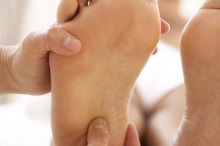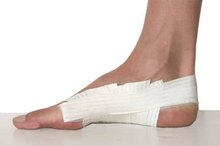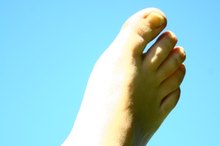What Is the Difference Between Compression Stockings & Support Hose?
Differentiating between support hose and compression stockings can be confusing. Even distributors muddy the waters by inaccurately using the terms interchangeably. However, there are a couple of differences that, though not apparent on the surface, define each of these medical supports, placing them squarely in their own categories.
The Similarities
Compression stockings and support hose both serve the same basic function. When worn, they provide pressure from foot to knee (and sometimes thigh) to promote proper blood circulation. The pressure is greater at the foot and gradually lessens the higher up the leg the stocking goes.
The level of pressure is a measurable feature purposefully established by the maker for relief from medical issues that range in severity. Generally speaking, the more severe the issue, the more pressure is required from the stocking.
The Difference
What Is the Difference Between Compression Stockings & Support Hose?
Learn More
There is a simple dividing line between support hose and compression stockings. Support hose have a compression level at or below 20 mmHg while compression stockings are rated 20 mmHg or above. The mmHg abbreviation stands for millimeters of mercury and is the same unit of measure in blood pressure.
Support hose can be bought over the counter at just about any pharmacy. However, compression stockings may require a prescription and a fitting by a medical professional if the compression level is above 40 mmhg or if they are custom made.
Uses for Support Hose
Support hose provide a mild compression of the legs that is greater at the foot and gradually loosens as it approaches the knee or thigh. This pressure promotes better blood circulation by pushing the blood back up toward the heart. This also reduces swelling from fluid build-up. Keeping the blood moving at a more consistent pace also helps to prevent blood clots in the legs. Those at risk of DVT (deep vein thrombosis) or what is commonly referred to as "economy class syndrome," which is a blood clot in the leg caused by long stretches of sitting during flights, can reduce the risk of DVT by up to 90 percent by simply wearing support hose.
Uses for Compression Stockings
The Bottom of My Foot Gets Numb When Running
Learn More
More serious circulatory problems caused by medical issues are treated with the higher-pressure options of compression stocking. The more common medical conditions requiring compression stockings are as follows:
Diabetes
CVI (chronic venous insufficiency) - oxygen-poor blood is not efficiently pumped back toward the heart
Lyphedema - an accumulation of lymphatic fluid that causes swelling
Varicose veins - swollen veins that often appear twisted just below the skin
Post-phlebitic syndrome - a chronic condition resulting from DVT
TED Hose
A third type of support stockings are called TED hose. Also known as antiembolism stockings, these are designed for people who are nonambulatory (unable to move around), bed-bound or have an extremely limited range of motion to maintain circulation in the legs. Unlike support hose or compression stockings, TED hose are only meant to be worn for short amounts of time and often have a hole in the toe so that a nurse or medical professional can regularly check on circulation.
Related Articles
References
Resources
Writer Bio
Since 1995, Sharideth Smith has written everything from 400-word blog posts to political platforms. Her work has been featured on various online publications and she has a solid following on her own website where she has been doling out relationship advice since 2009.







